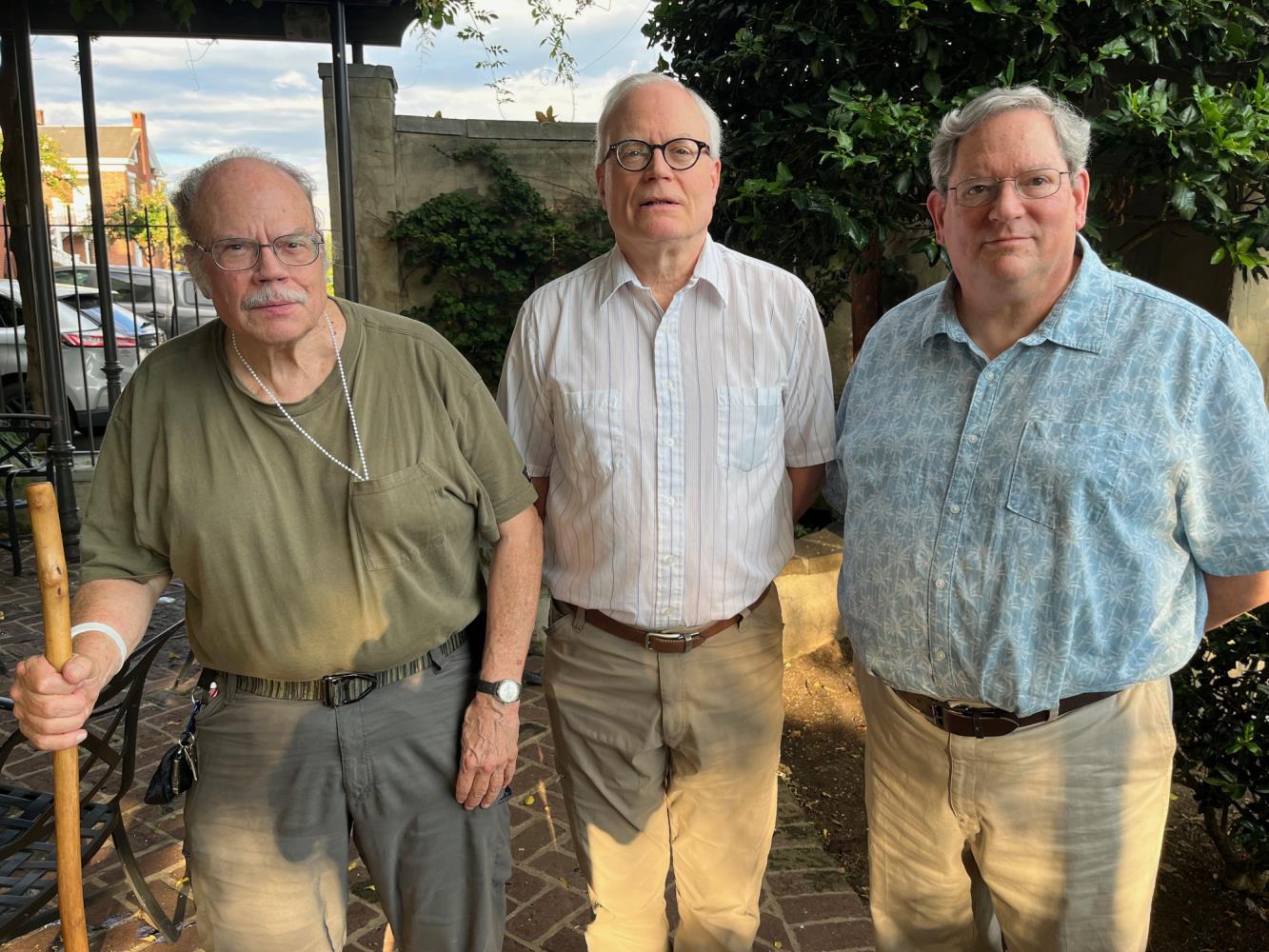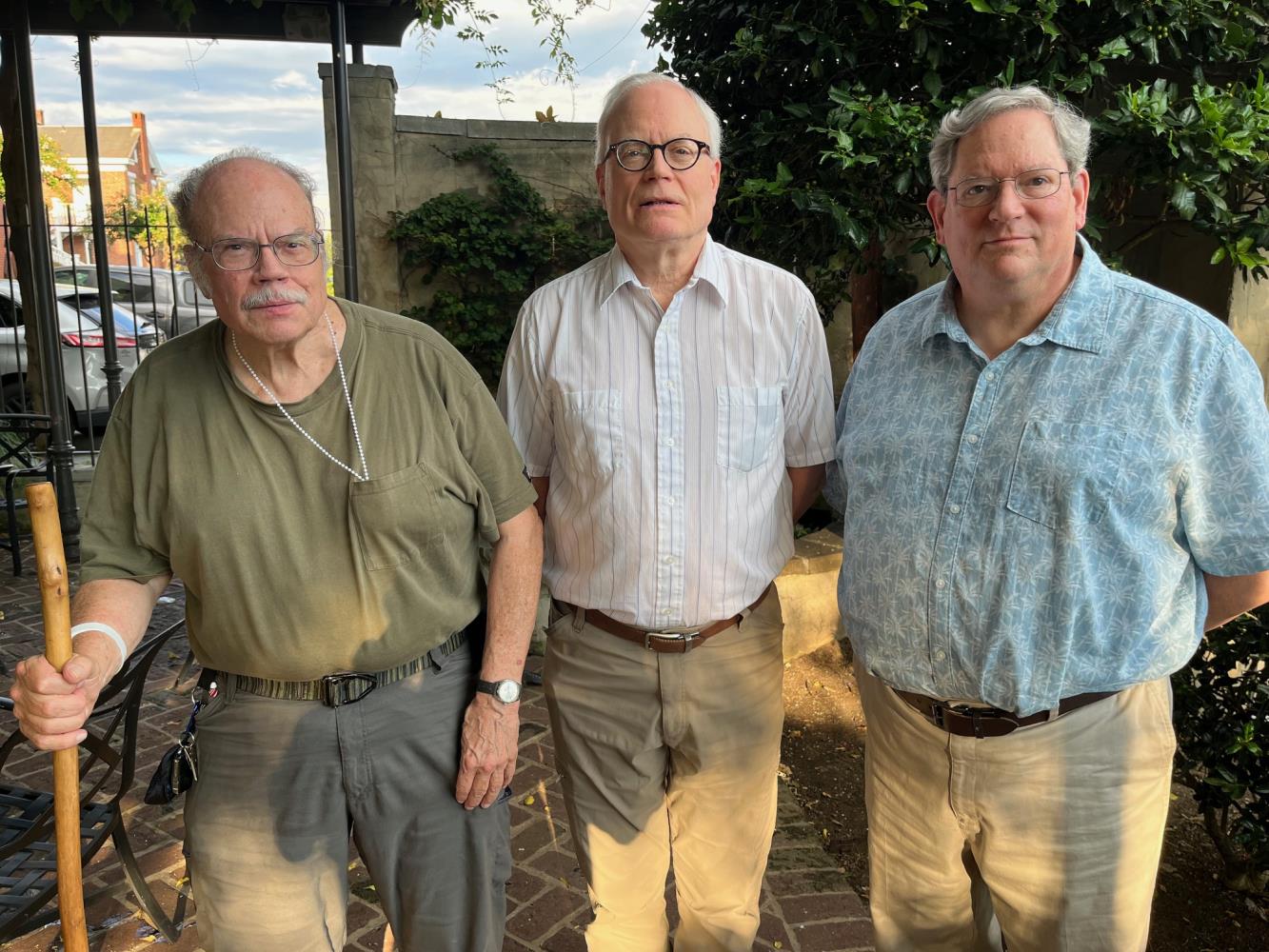
Tom Street, David Street and Ed Street
photo by John Shearer
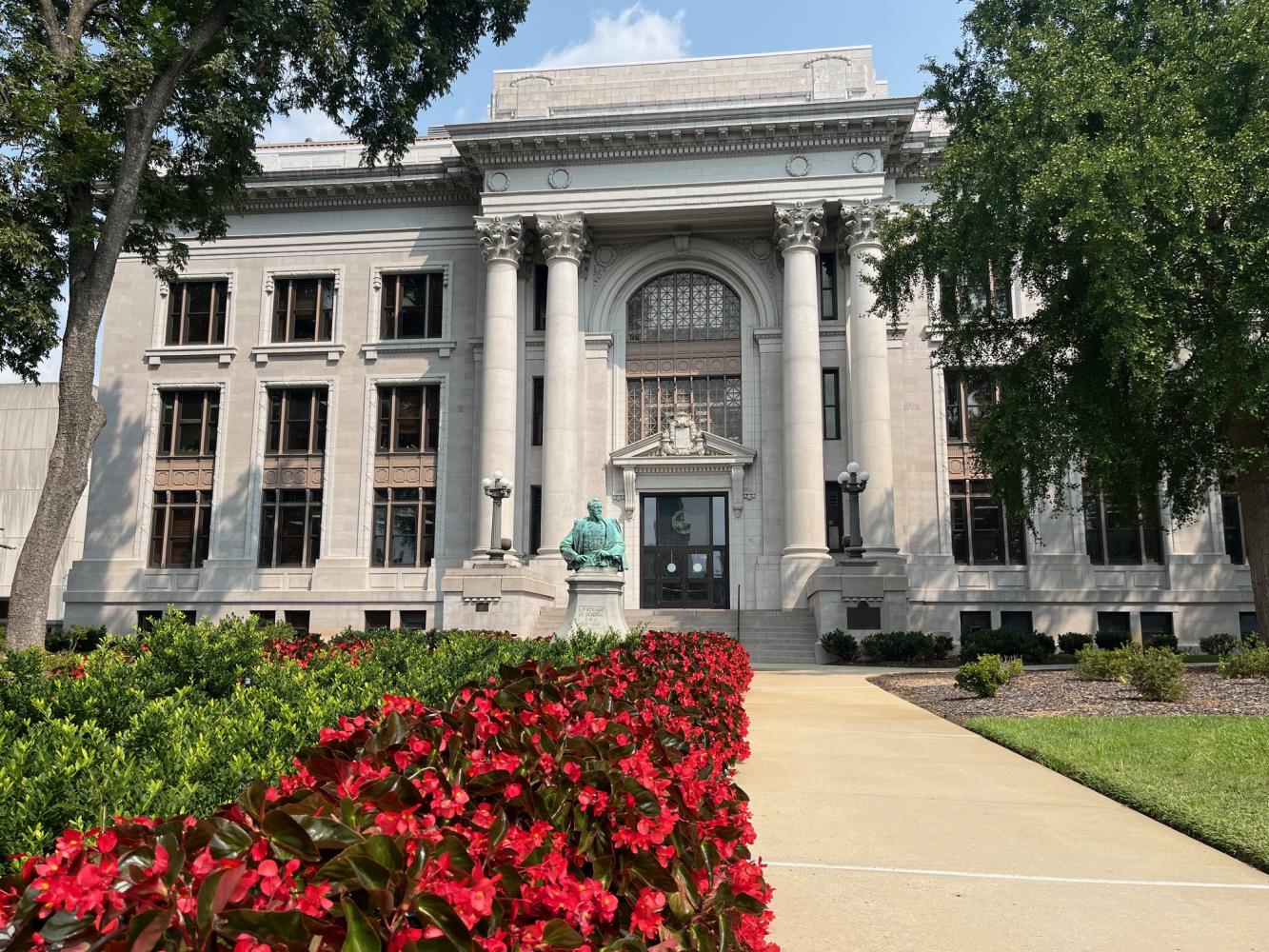
R.H. Hunt’s Hamilton County Courthouse
photo by John Shearer
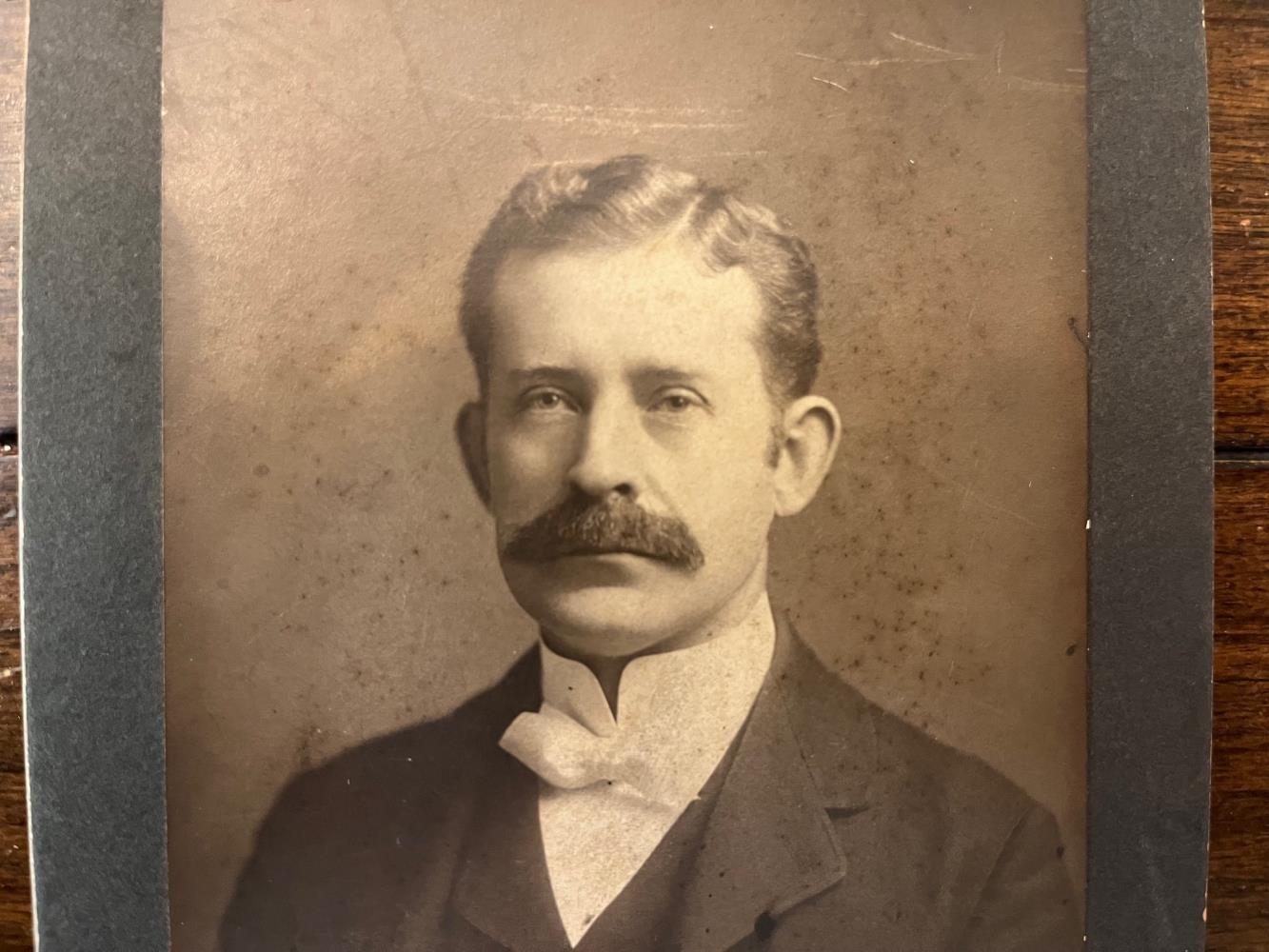
R.H. Hunt
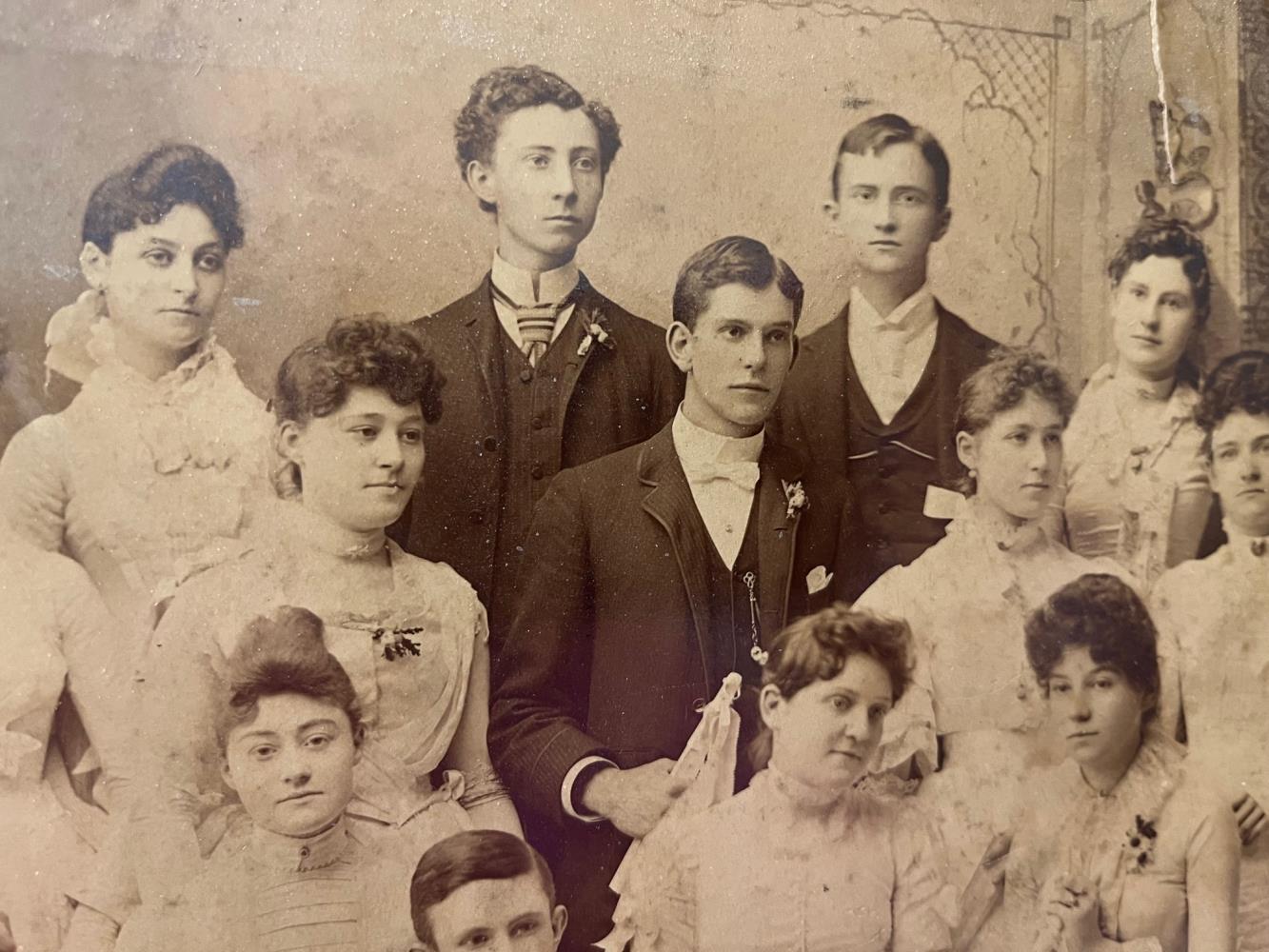
R.H. Hunt is in the middle in dark suit
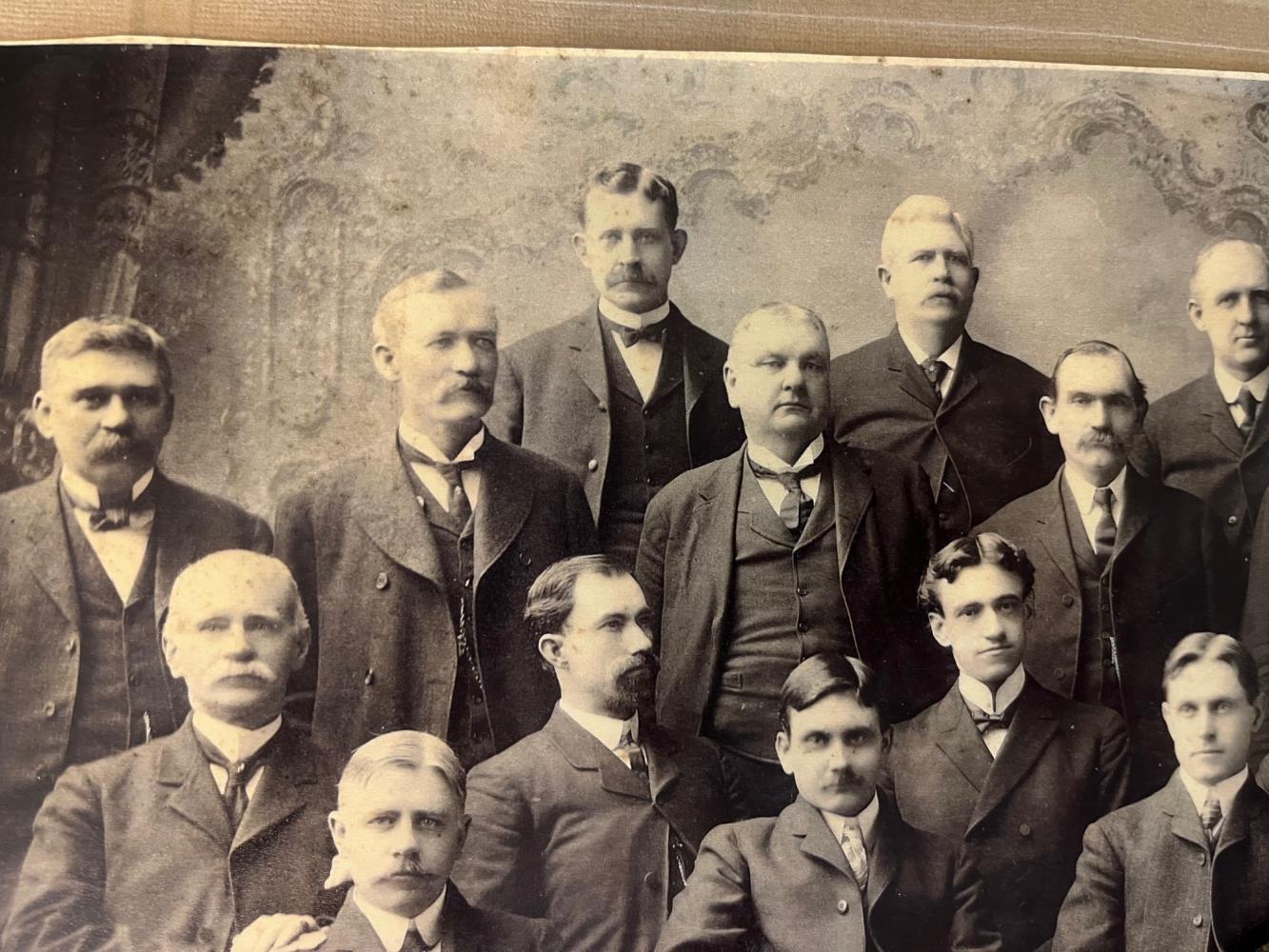
R.H. Hunt is back row on left
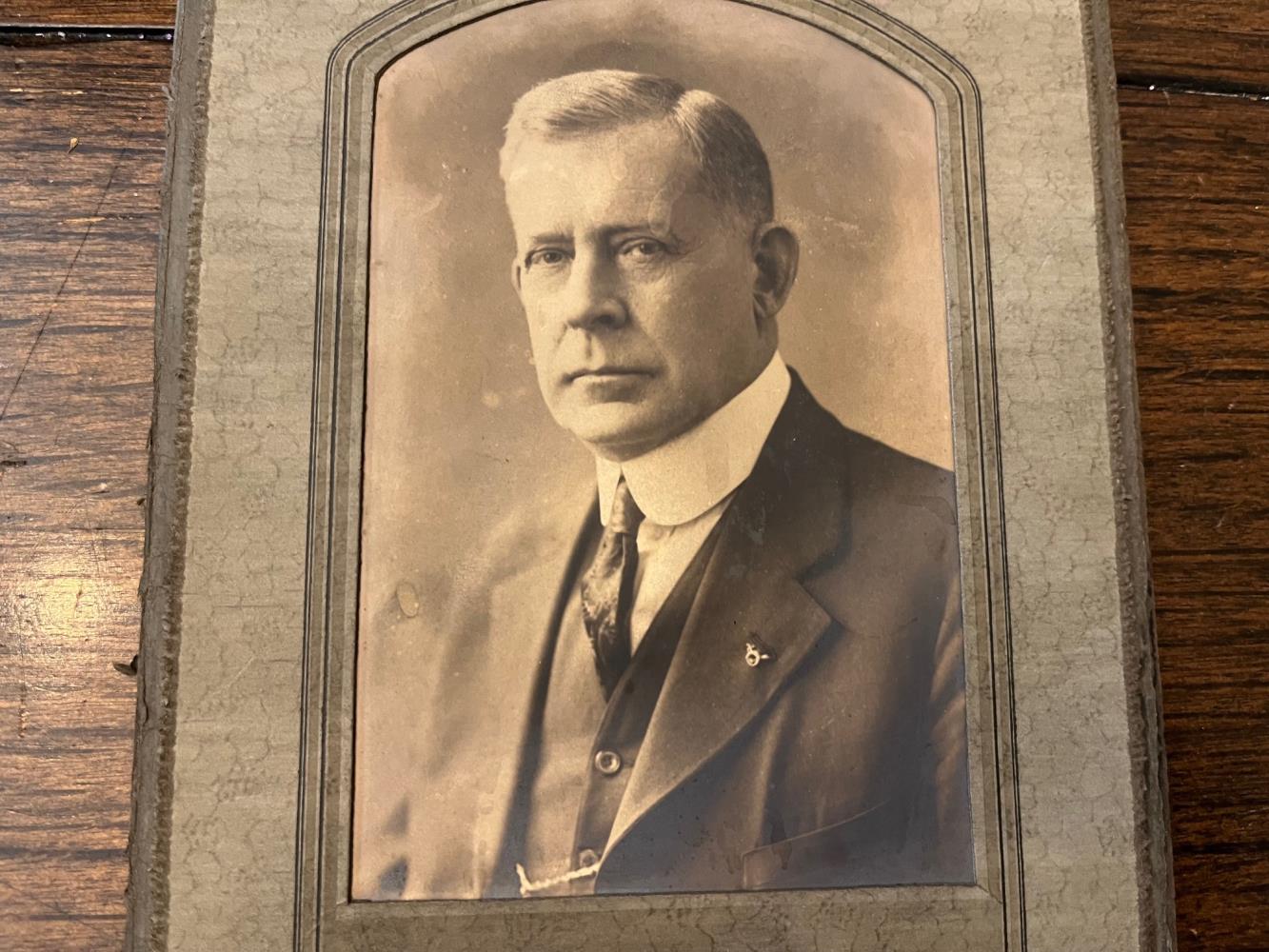
R.H. Hunt
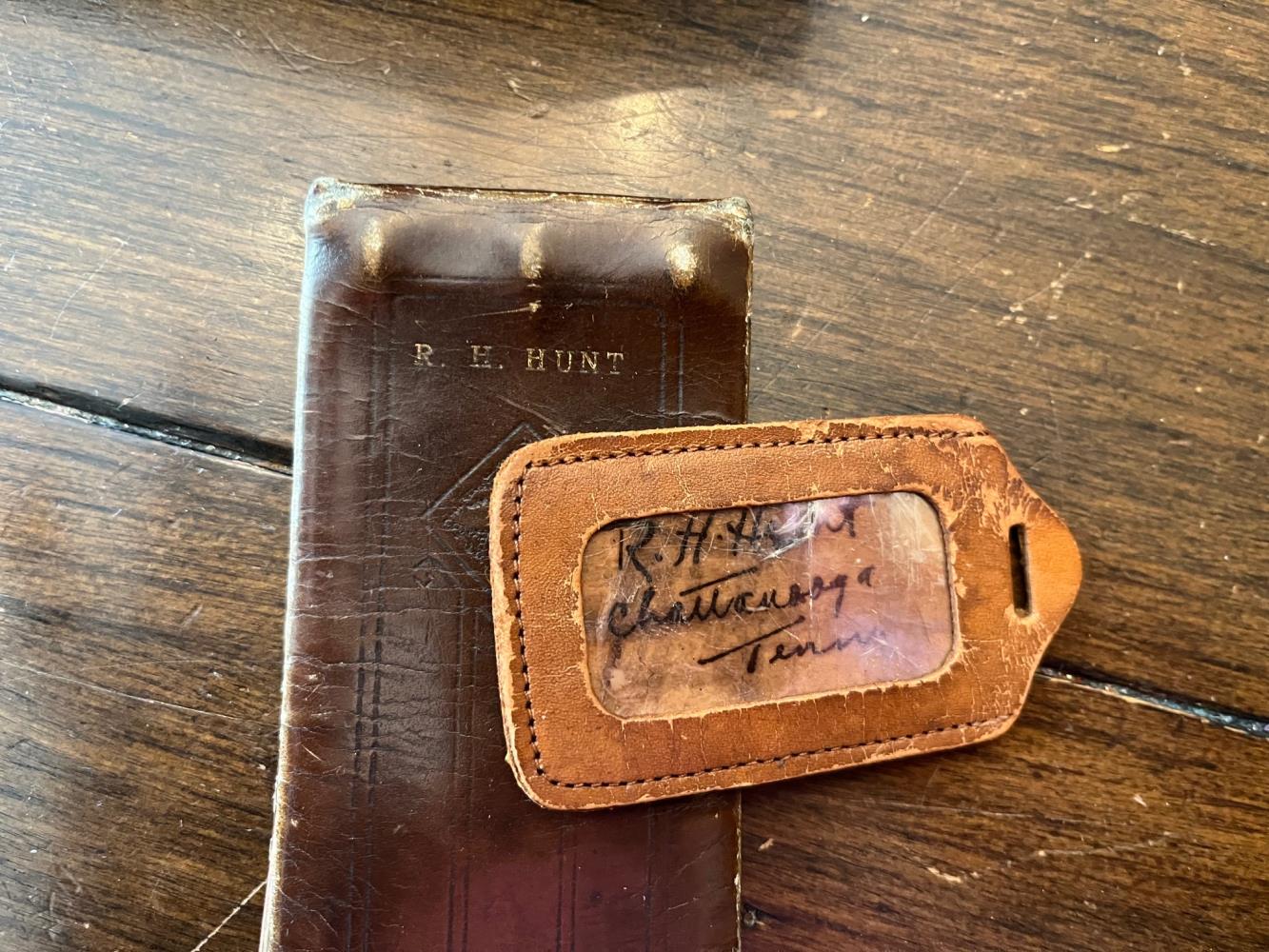
Hunt notebook and tag
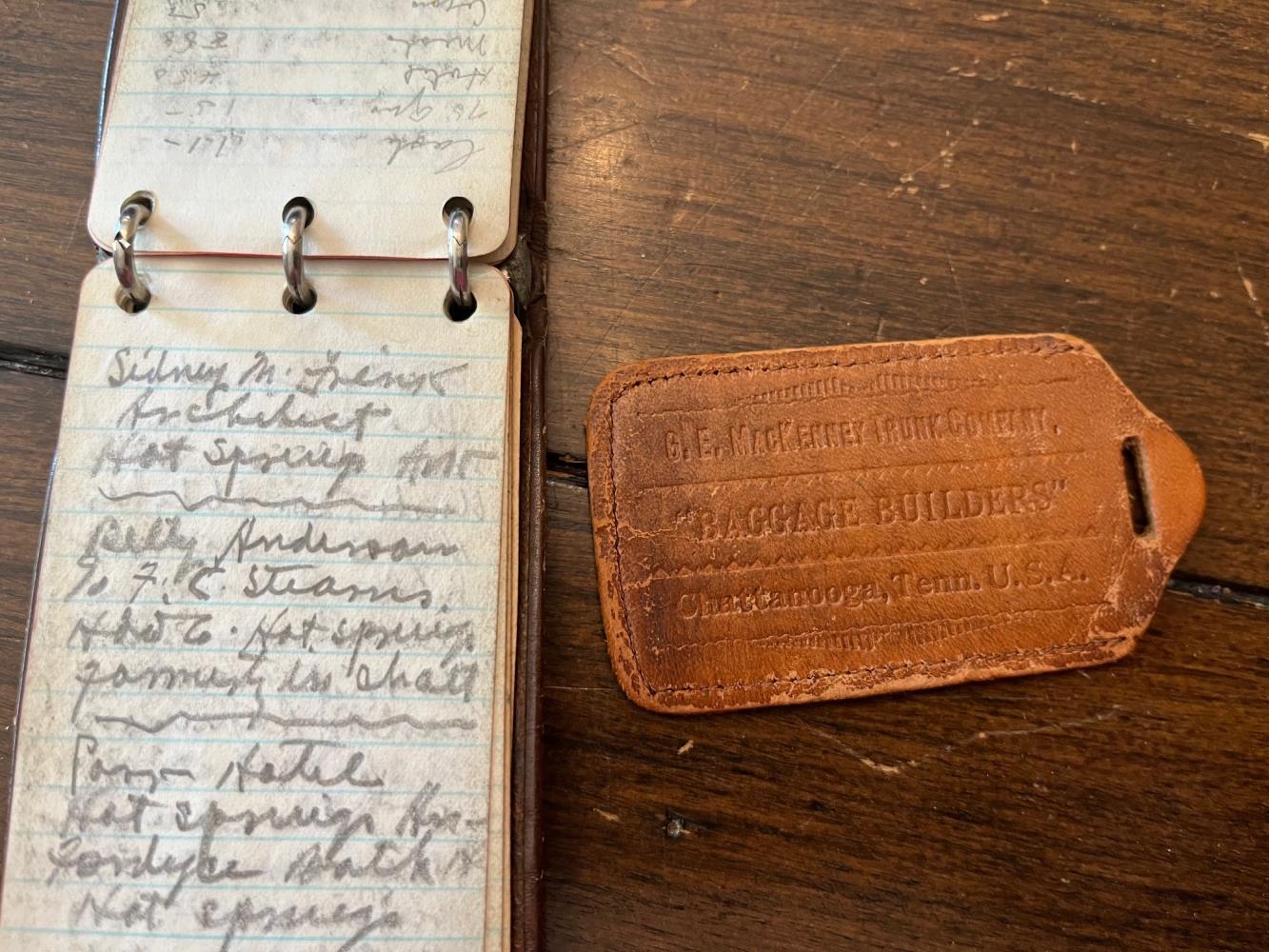
Notebook and baggage tag
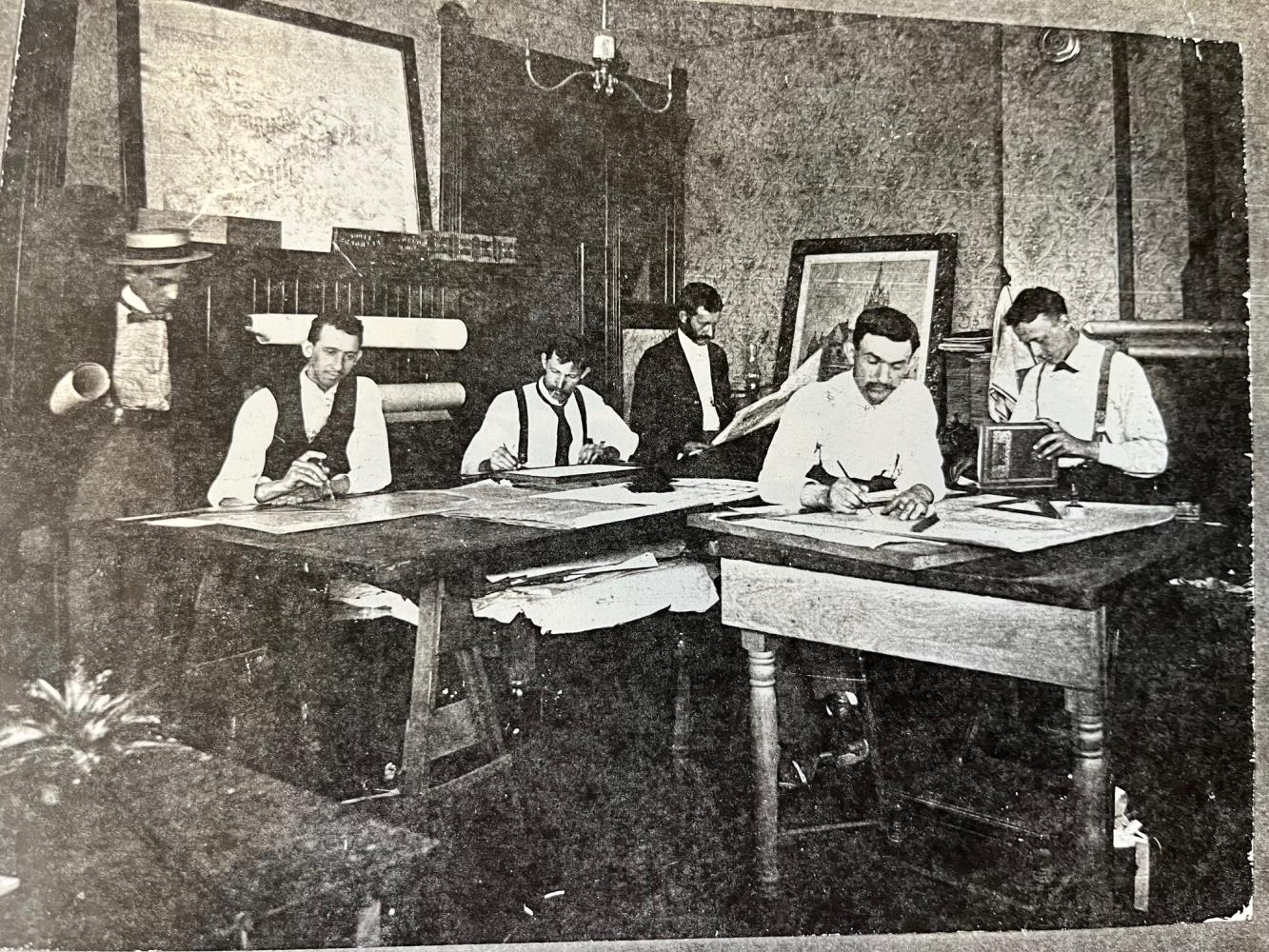
R.H. Hunt and architectural crew at work
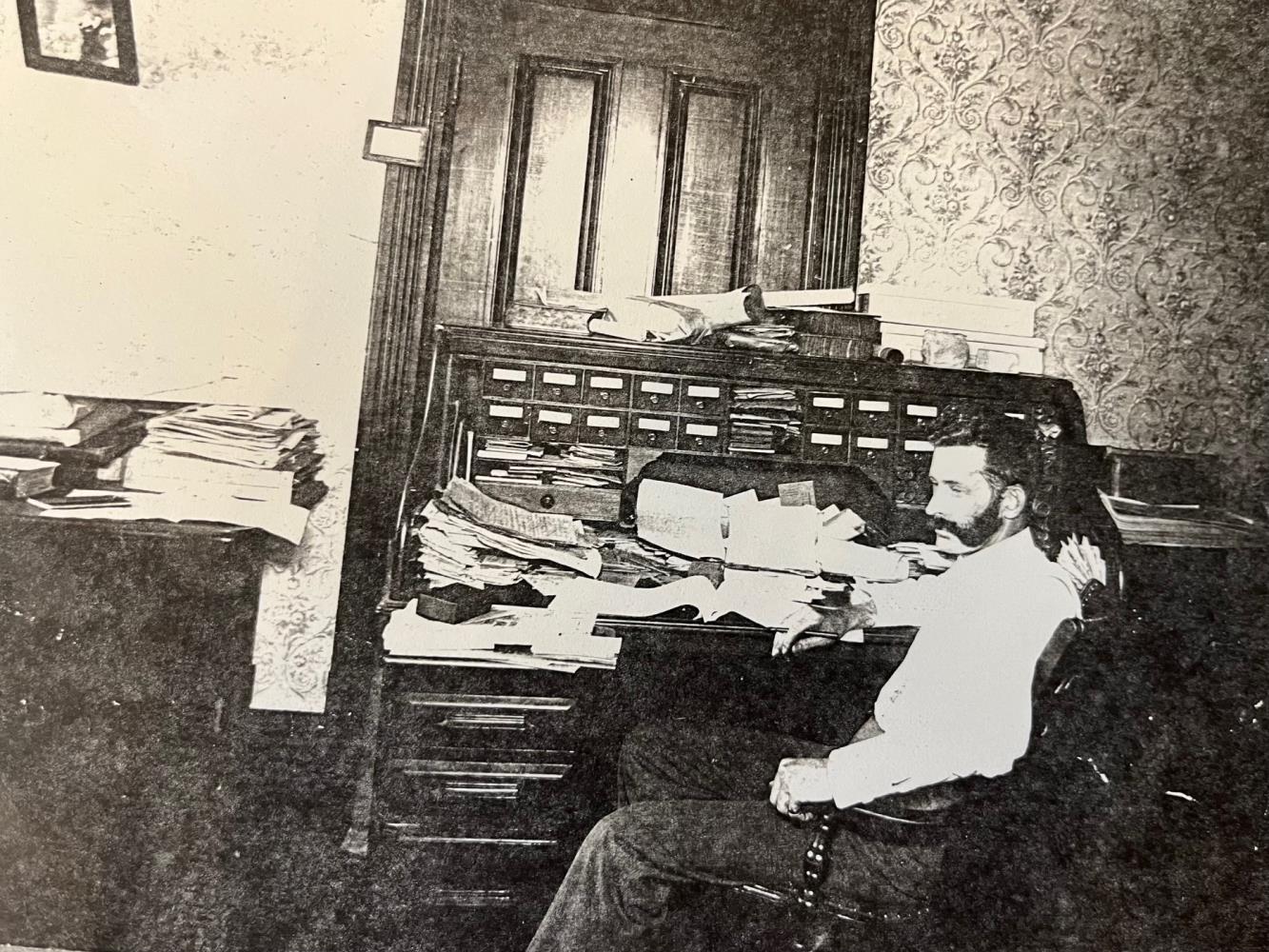
R.H. Hunt at desk
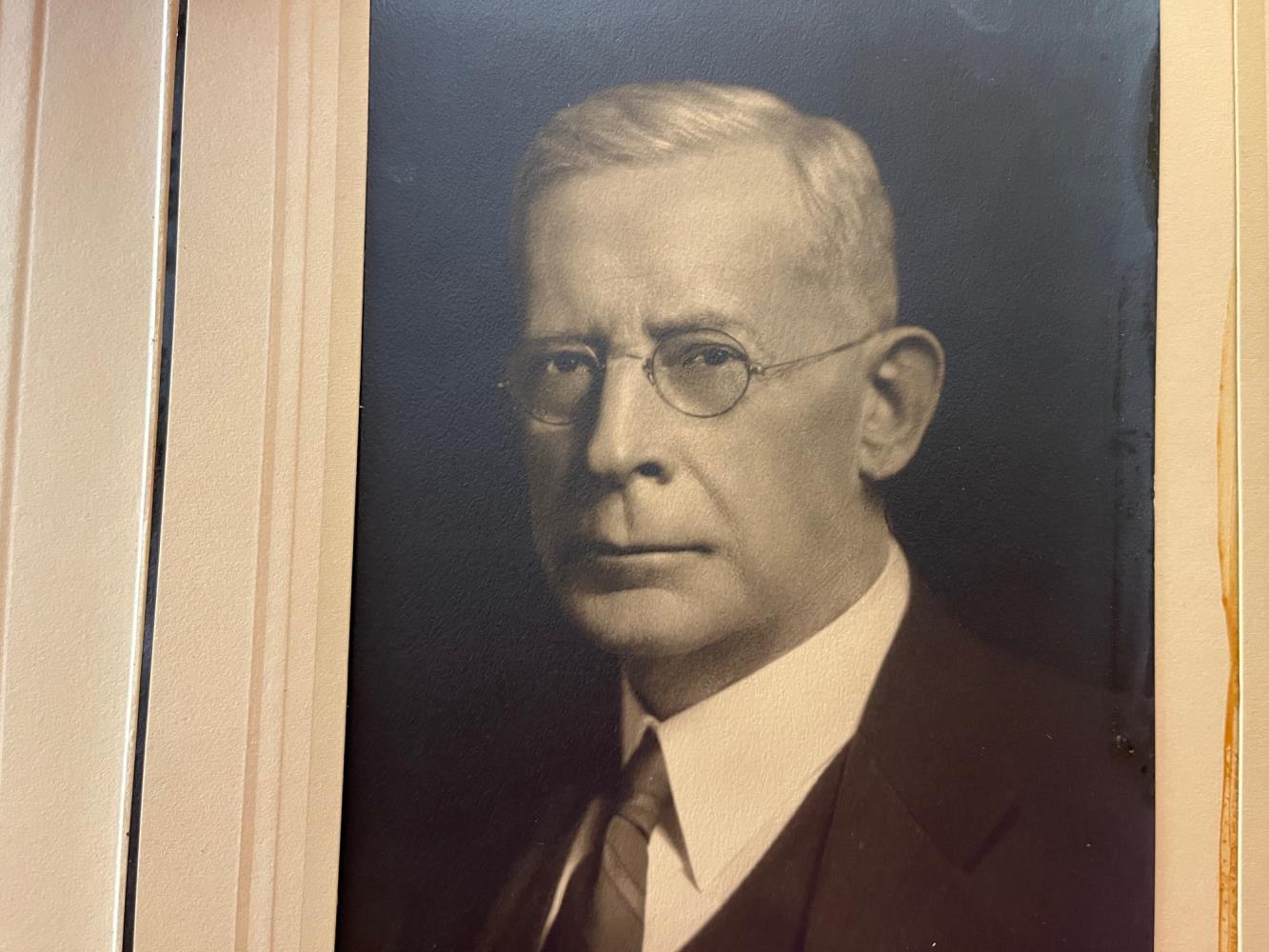
R.H. Hunt
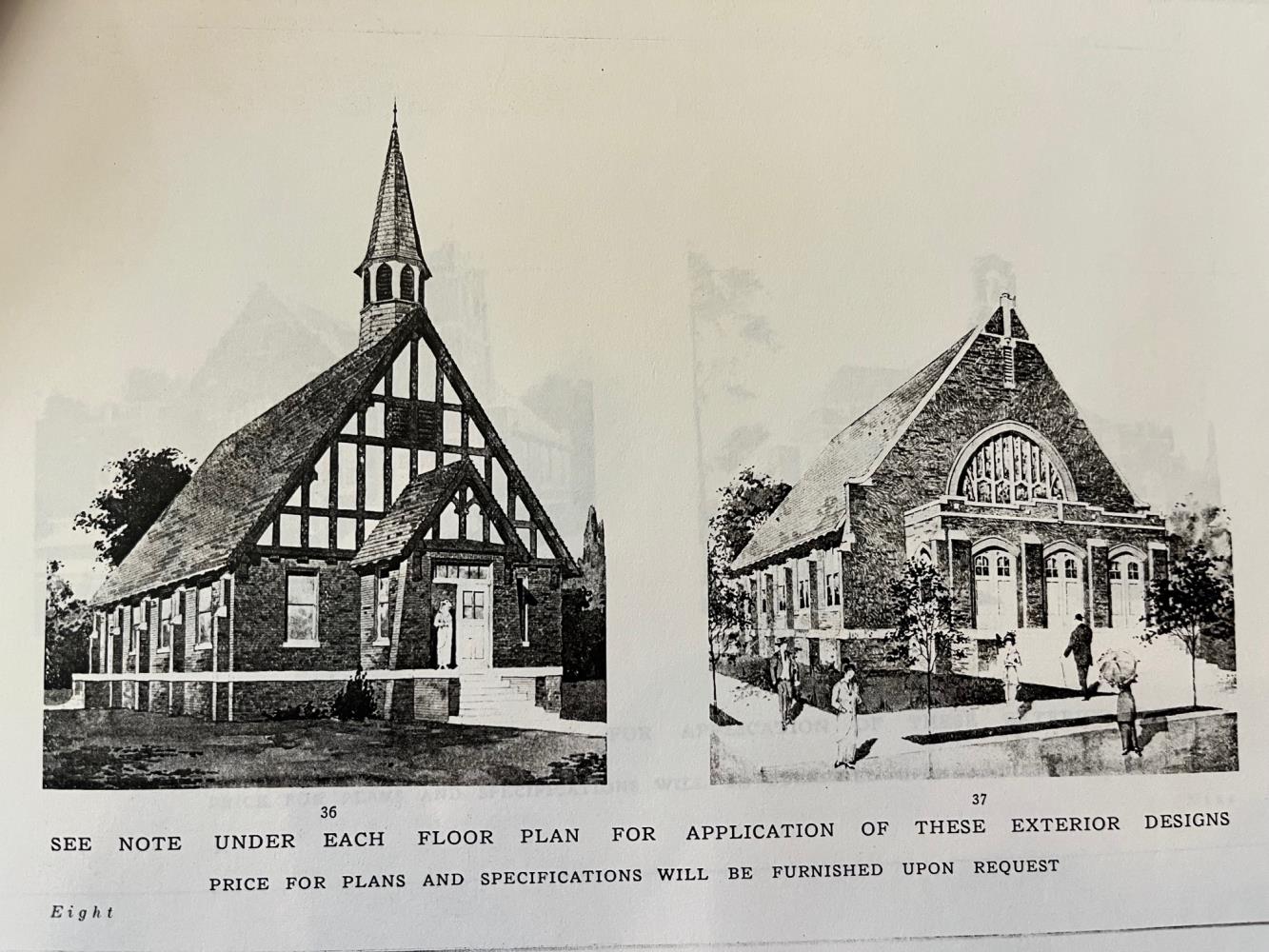
Church patterns
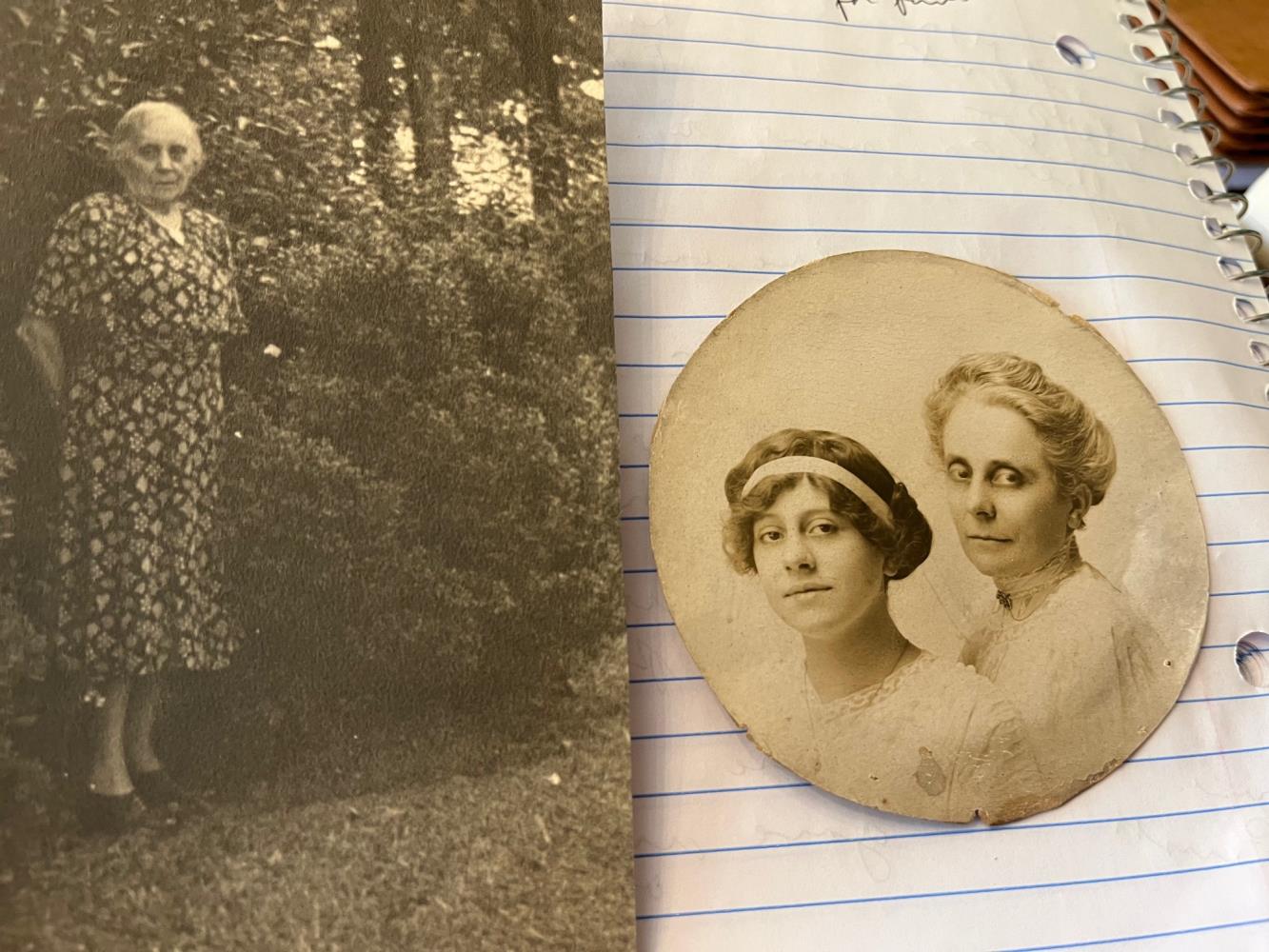
Katherine Hunt with daughter Louise
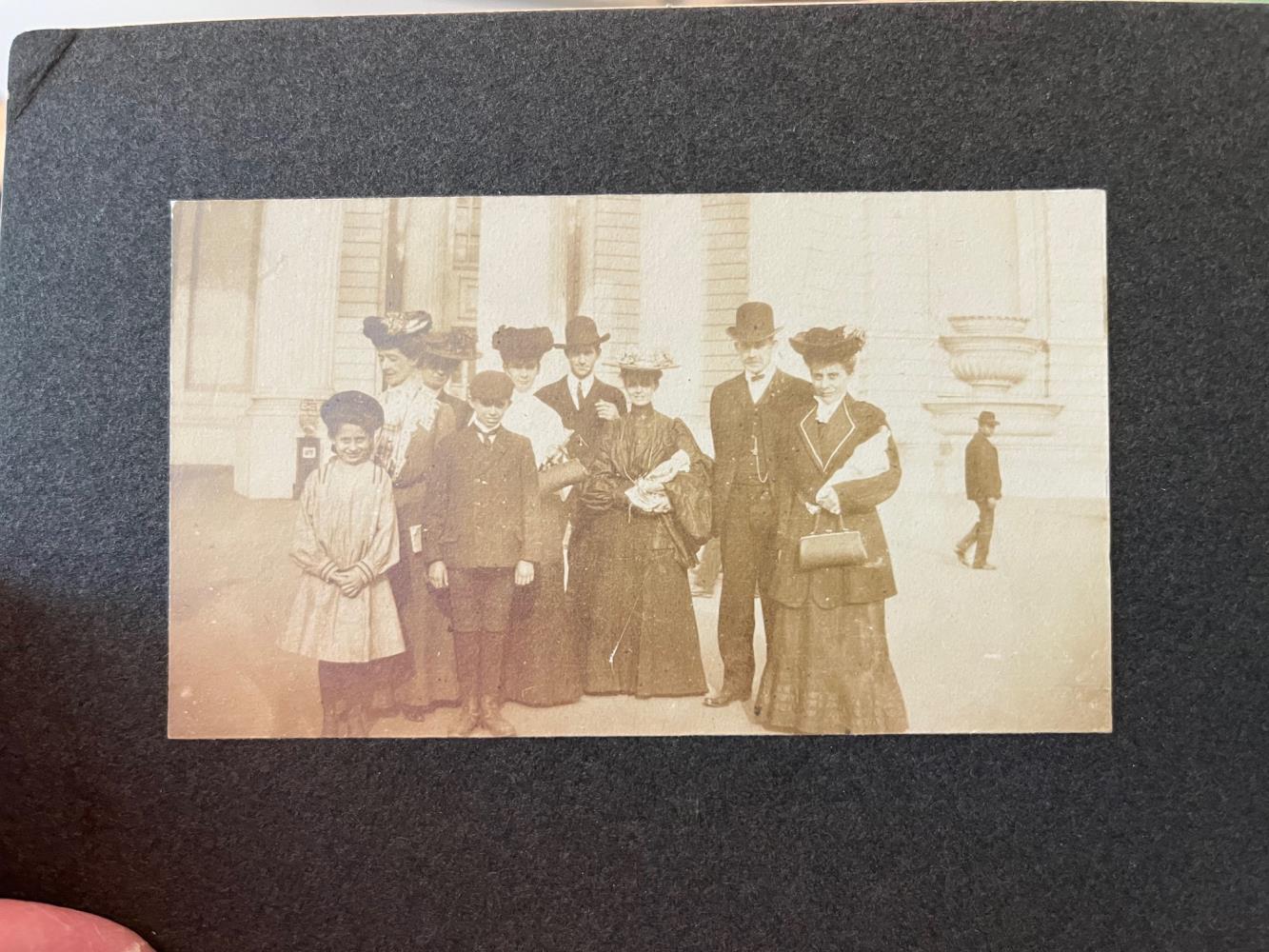
R.H. Hunt and wife, right, at 1904 St. Louis World’s Fair
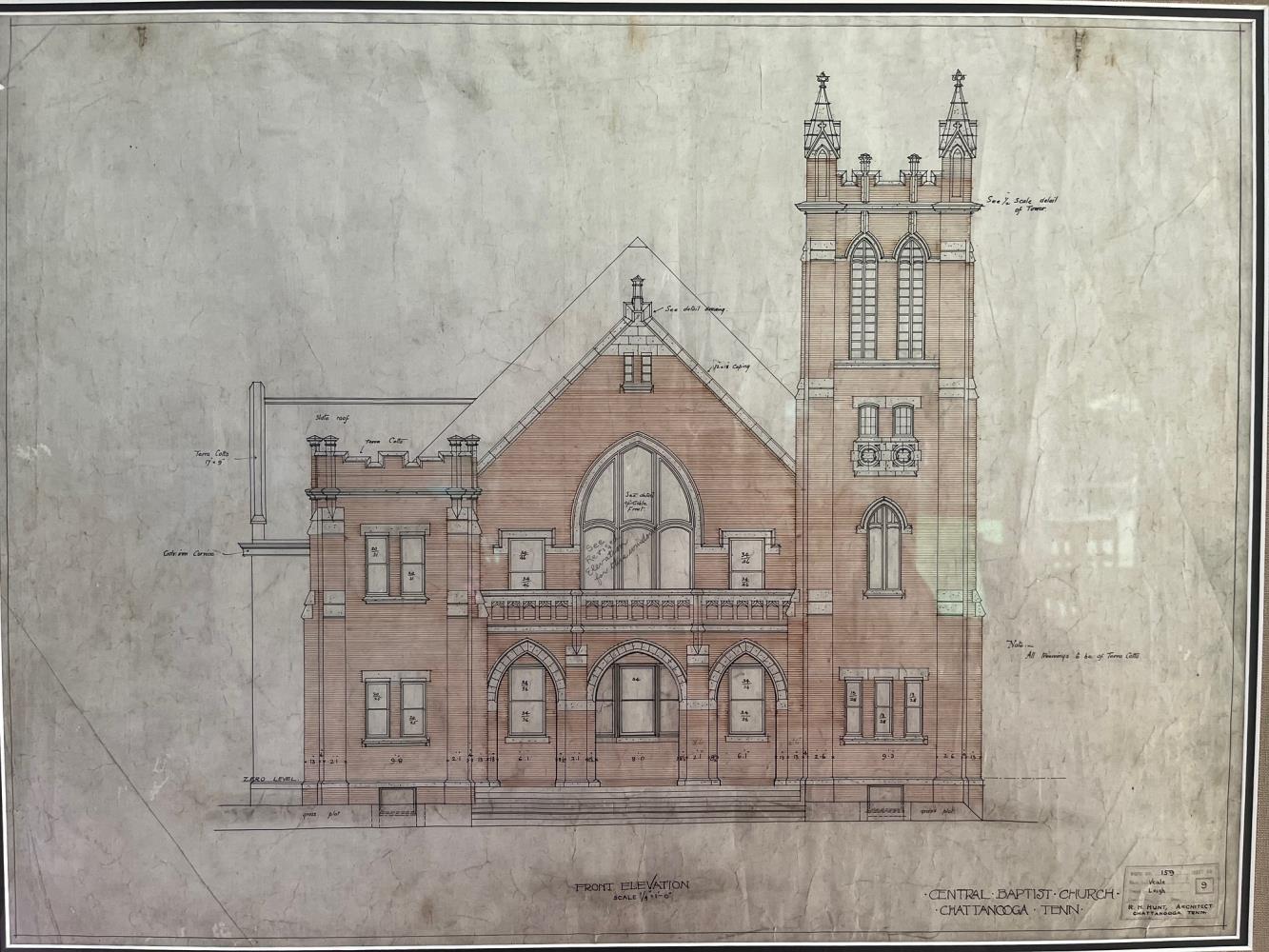
Church design
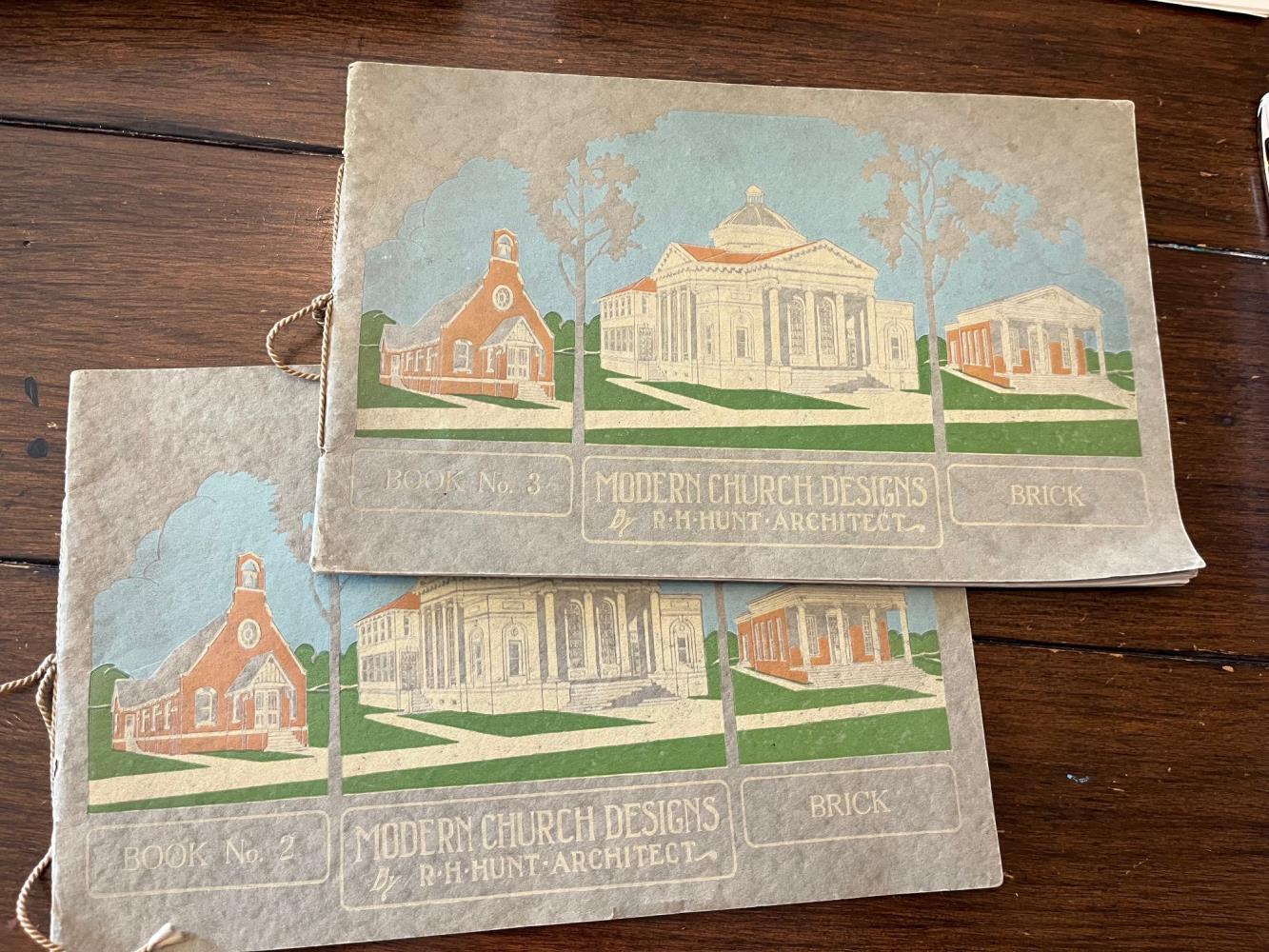
Modern church designs
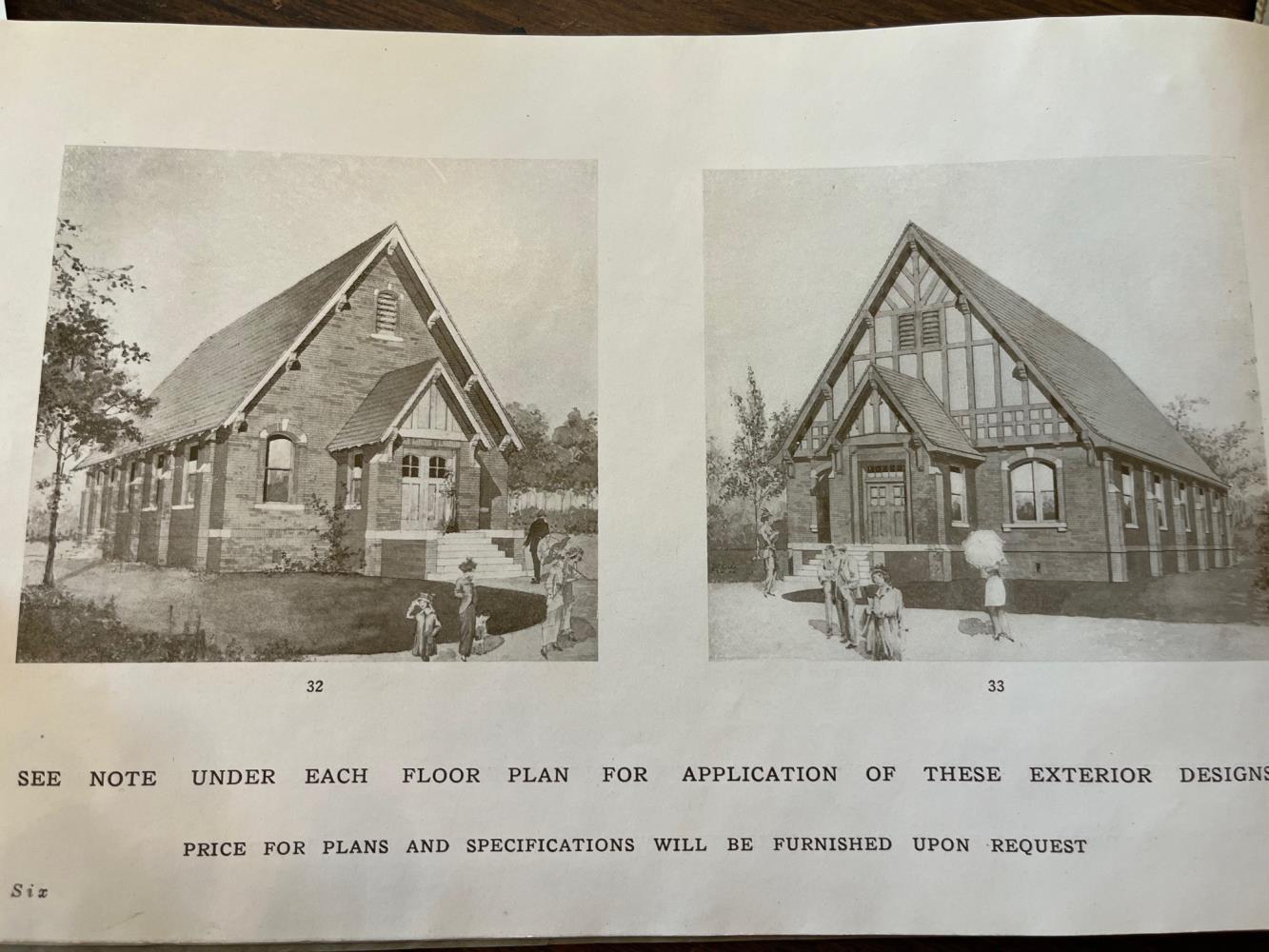
Church patterns
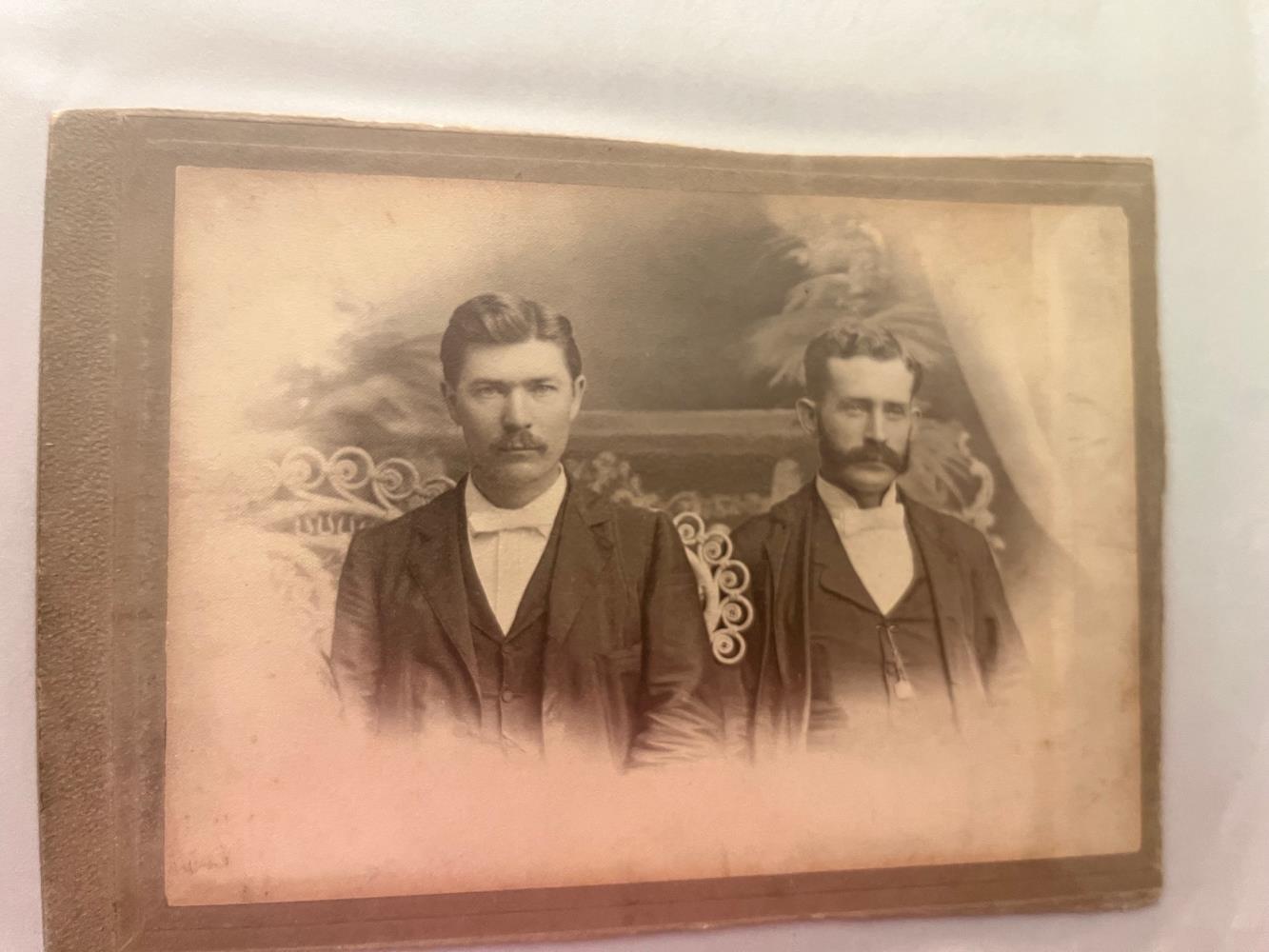
R.H. Hunt is at right
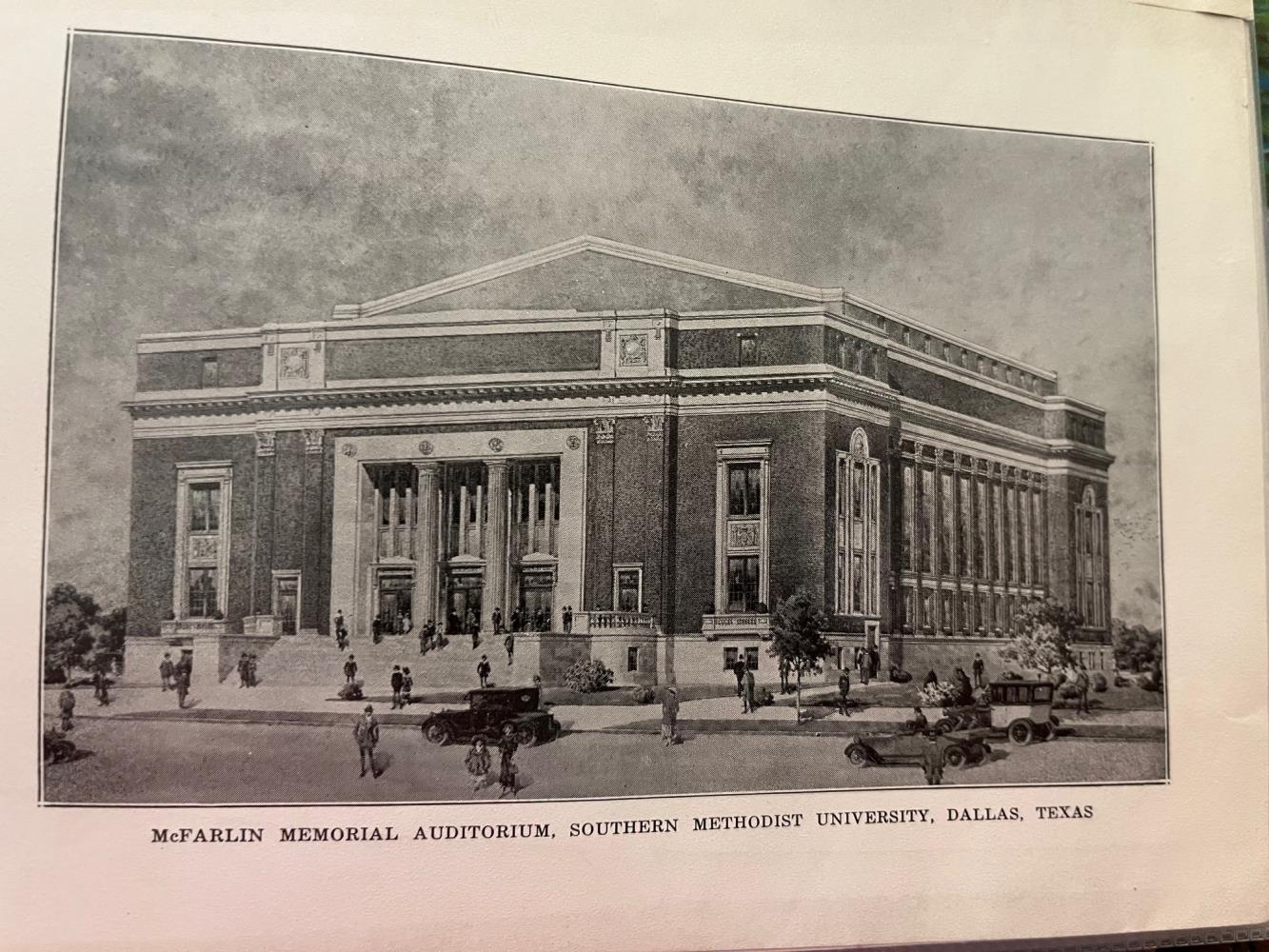
Hunt creation at SMU
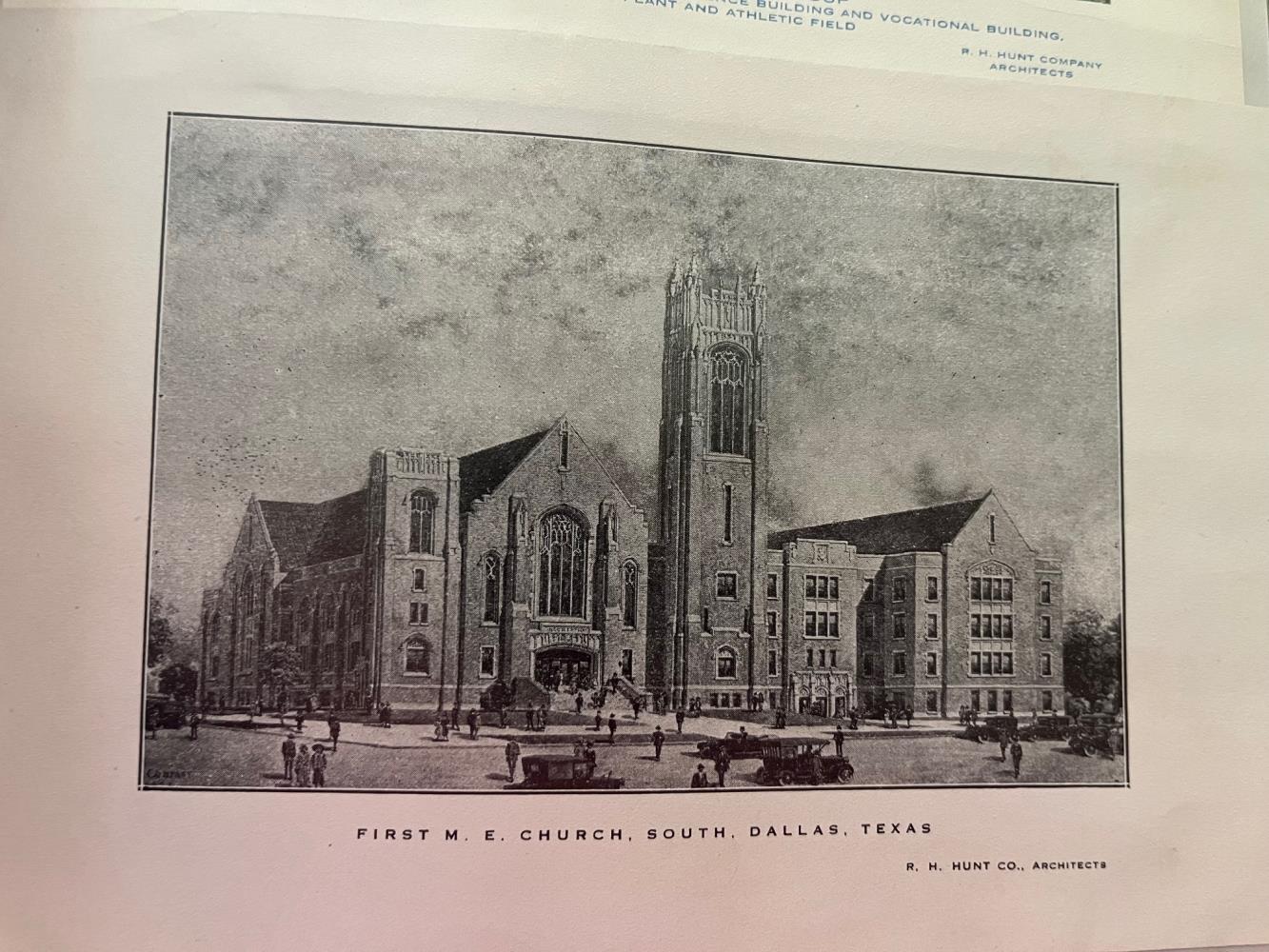
Methodist church in Dallas
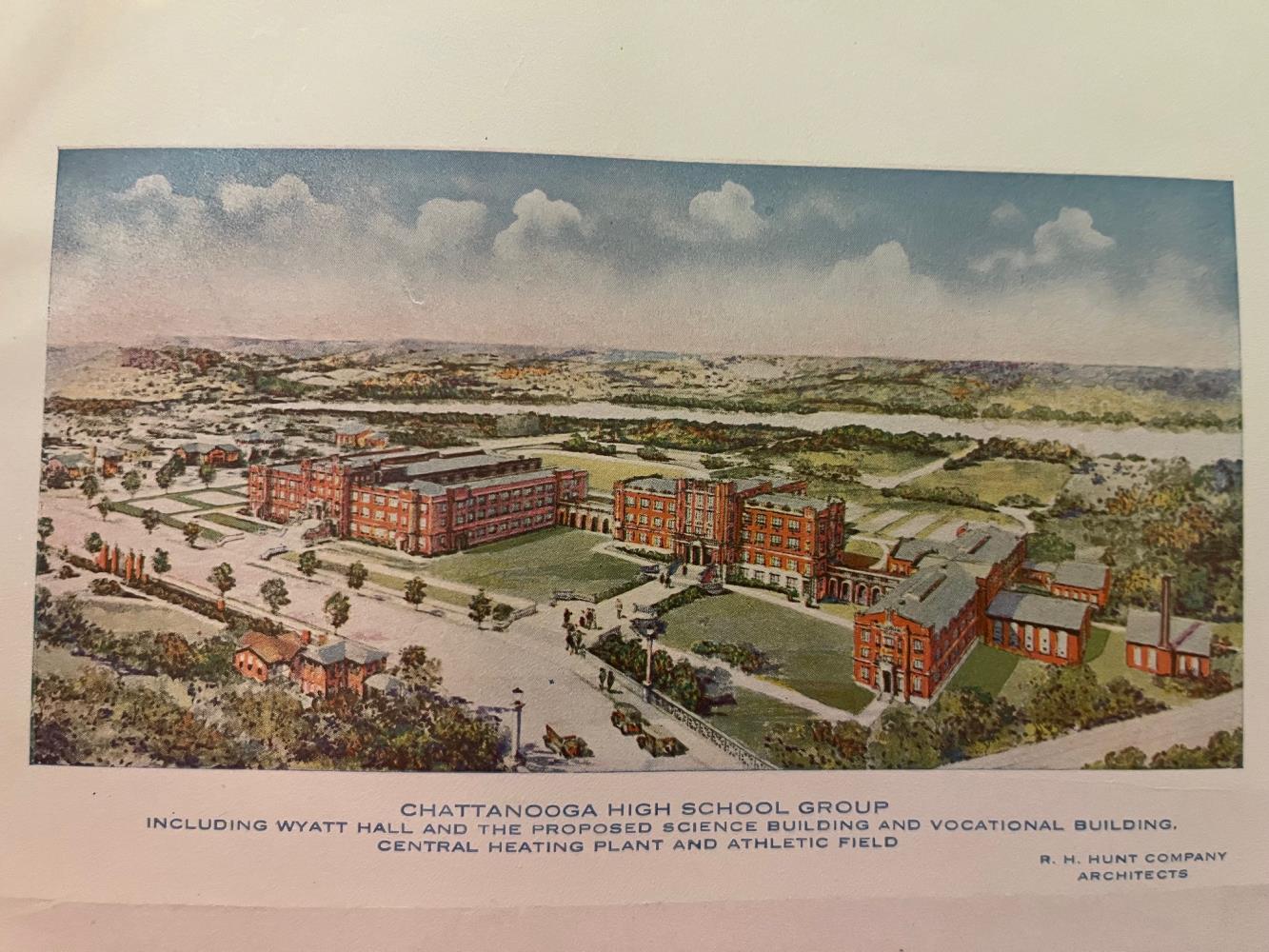
Design for Chattanooga High School (current CSAS). All sections were not built.
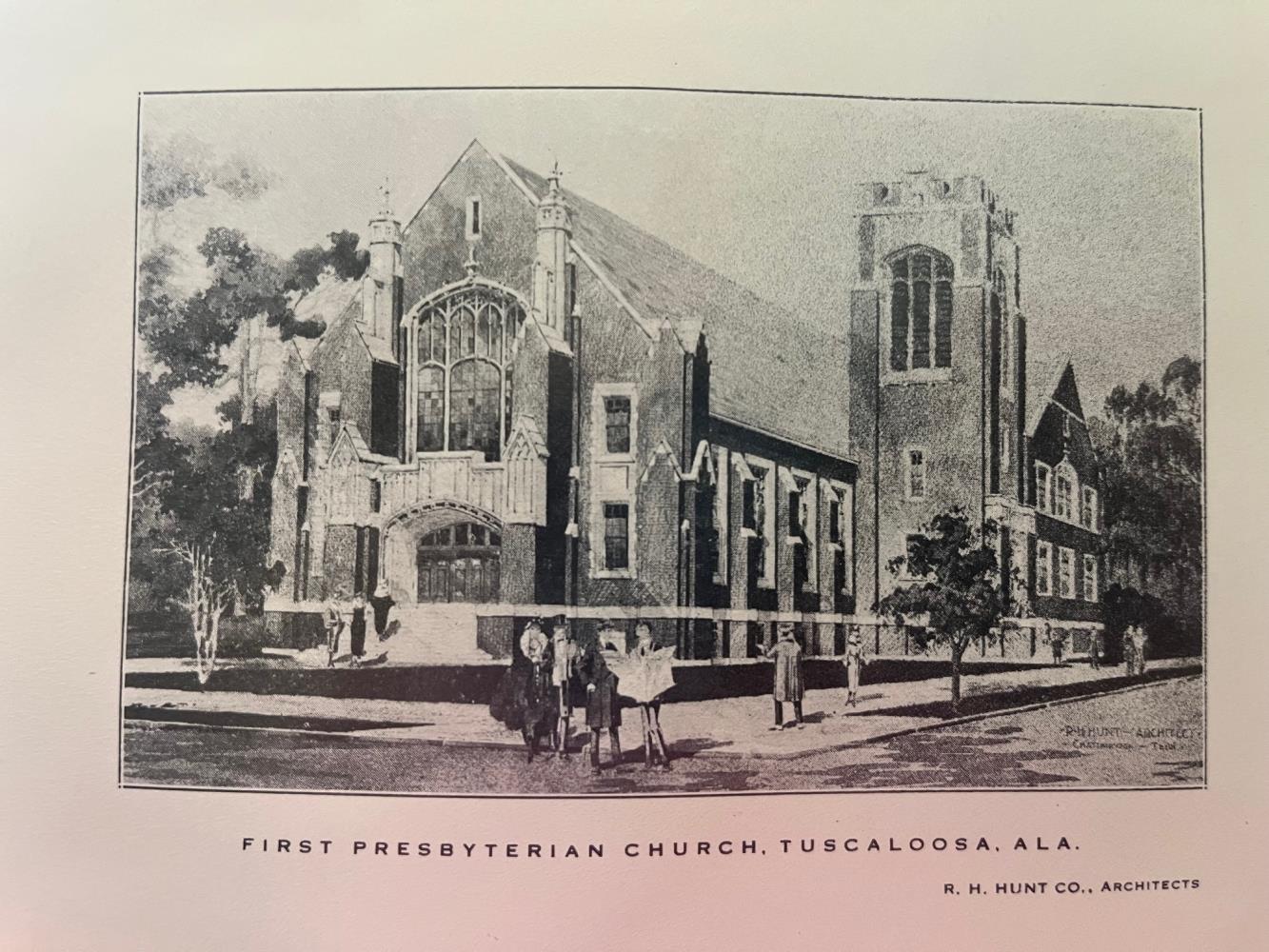
First Presbyterian Church, Tuscaloosa, Ala.
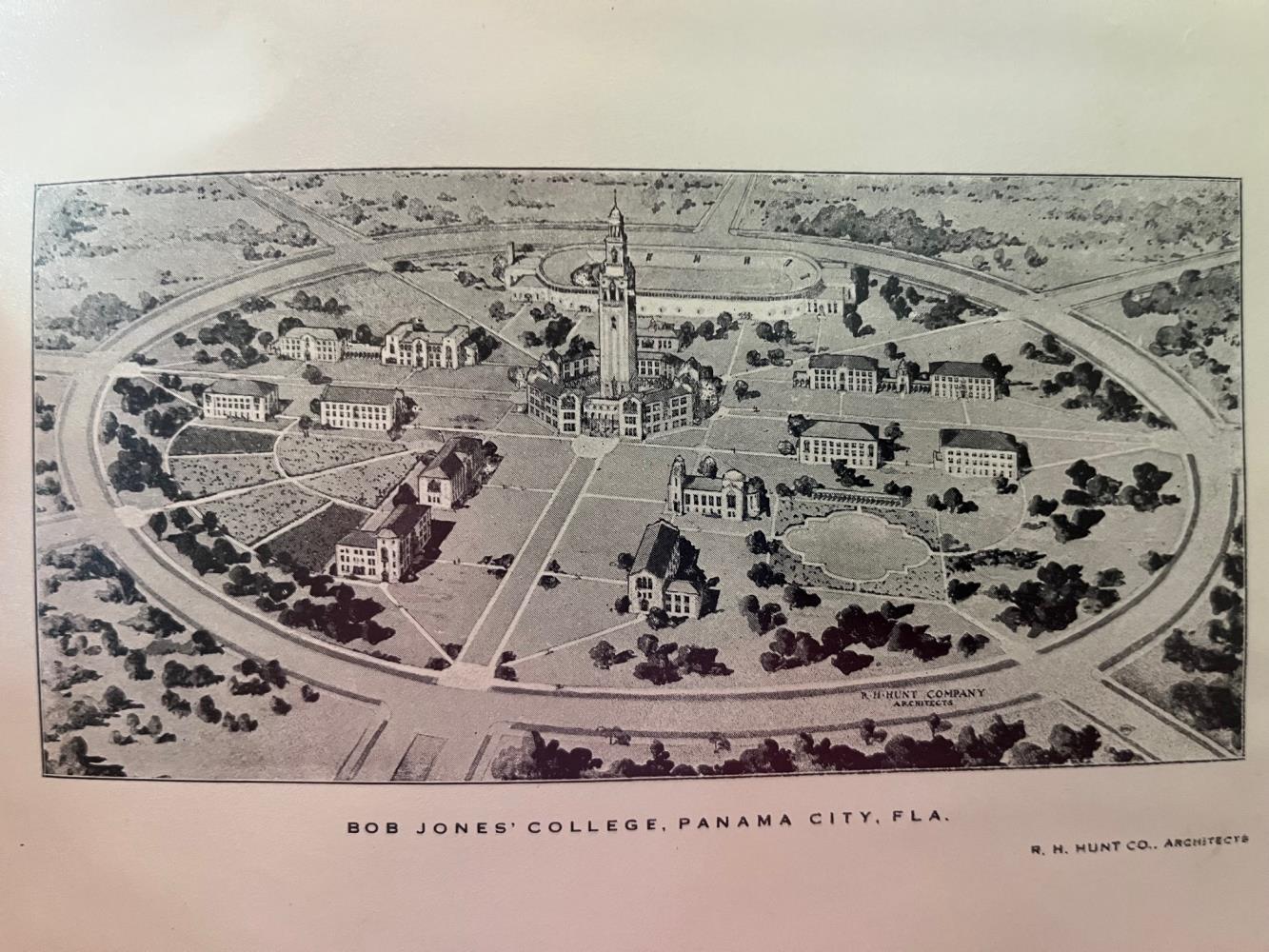
Hunt design for Bob Jones College, Panama City, Fla.
Previous
Next
Perhaps the most noted architect of yesteryear in Chattanooga was Reuben Harrison Hunt, who designed such buildings as the Hamilton County Courthouse, City Hall, the Carnegie Library and Chattanooga School for the Arts and Sciences, among many others. In contrast, this man whose work was also prolific throughout the South until his death in 1937 has a few local descendants whose remembrances of him have been much less publicly chronicled than his buildings.
And some of these descendants recently got to inspect a trove of R.H. Hunt items in Nashville.
These great-grandchildren are no less appreciative than those who have been highlighting Mr. Hunt’s talents in calling for the preservation of his Medical Arts Building, which is scheduled to be razed by owner First Presbyterian Church.
In fact, at least one of the family members is joining the chorus of support. “I hate to see history destroyed like that,” said great-grandson Ed Street. “A lot of his buildings are very beautiful. They are probably expensive to fix up, but if we tear everything down, there is not going to be any history left.”
With the help of Ed’s wife, Pat, Mr. Street and his two brothers, Tom and David Street, recently gathered at Rembrandt’s coffee and pastry shop to offer their scant memories but great appreciation for their great-grandfather.
They are the children of Mary David Houston Street and Thomas G. Street Jr. Mr. Street was one of three children of Mr. Hunt’s only child, daughter Louise Hunt Street, who was 103 when she died in 1998. Her husband, Thomas G. Street Sr., was also an architect.
Louise H. Street’s two other children were Katie Sharp and Ed Street.
The three great-grandchildren of the prominent architect who were interviewed said they were not told a whole lot of detailed stories about their great-grandfather growing up, and that they do not have access to his old plans. A few of the latter have been in the collection of Franklin and Associates Architects.
But Tom did say, “Grandma used to tell us (about his buildings) as we’d drive around. We’d be driving through Chattanooga, and she would point out some of his buildings he had done.”
They added that if he made a lot of money in his highly successful practice, they know of no great inheritance immediately passed down. But they have heard a story that the well-known architect’s wife criticized him for being too generous in helping others, and he replied to her jokingly that she was not hurting for anything.
Pat did say she contacted Louise Reagan of Murfreesboro, a daughter of Louise’s daughter, Katie, recently, and she has a box of Hunt memorabilia and items. After the initial interview, Pat and Ed went to Nashville to meet with Louise and her brother, Alf Sharp, and Alf’s wife, Kathy. They ended up finding quite a bit of information that will be highlighted at the bottom of this story.
But what information and anecdotes the three great-grandsons did have before finding some additional information seemed comforting to them and shined positively on the architect, just like his buildings seem to do.
“He was a very nice man,” Ed said he was told. “During the Depression, he would put food out on the back porch and leave it.”
A story has also been passed down that he would design smaller church buildings for free or a discounted rate, they have heard. That is supported by the later information discovered.
Another story of his big heart and which was shared by Pat was that his daughter, Louise, said that when they lived in a home on Oak Street, it had a third-floor room designed as a small ballroom, but he converted into a roller-skating rink for Louise and friends.
Later, he drew plans for his own Missionary Ridge home at 37 S. Crest Road that was similar to one he also designed for his daughter at 212 S. Crest Road. The descendants said that both homes have thick walls to make them fireproof.
Mr. Hunt, whose wife, Katherine, was from the DeGeorgis family that ran a popular confectionary store of yesteryear in downtown Chattanooga and came from Sardinia, was the oldest of nine siblings. Youngest sibling Ben F. Hunt was also an architect, and after R.H.’s death, there was some kind of disagreement between Louise and Thomas G. Street Sr. and Ben over the R.H. Hunt name in their work. The two architects had broken up their partnership in 1944.
“There was some ill feeling,” said Ed Street.
The descendants and Pat added that was sad to hear knowing R.H. Hunt was considered a caring and Christian man who was involved as a member at First Baptist Church and would not have liked any such rifts.
Of the three great-grandchildren interviewed, none became architects, but they did all study engineering at Georgia Tech. David, a Chattanooga City High graduate, was a computer programmer for Texaco in Houston and retired to Lookout Mountain. Tom did some electrical engineering work before teaching community college math in Northwest Georgia. Ed, a McCallie graduate – even though grandmother Louise had attended Baylor in its first stint as a coed school around the turn of the 20th century – was a chemist in Atlanta and worked in Chattanooga for Chattem. He had met Pat, a City High and UTC graduate, at a McCallie reunion she happened to attend.
But despite finding their own work, they still have much appreciation for the architect and man R.H. Hunt, whose name is still often in the news over his buildings that are both appreciated and sometimes threatened.
“I get to see his name in several places,” said Tom Street. “Covenant College, which is just a half mile from our house, has got a plaque in their lobby with his name on it since he designed the main building on campus” (Carter Hall, which was the former Lookout Mountain Hotel).
David added simply, “I don’t know that much about my ancestors, but I do happen to know of my great-grandfather, the famous architect.”
* * *
Late last week, about a month after I interviewed the three descendants initially, I learned that Pat and Ed had some materials that a cousin, Louise Reagan, let them look through after their visit to Nashville.
They invited me to come over and look at them at their home off Old Dayton Pike in the North Red Bank area, where they already had a large framed architectural rendering of the old Central Baptist Church on McCallie Avenue designed by R.H. Hunt. The collection turned out to be a gold mine of artifacts for any admirer of R.H. Hunt the architect or man.
Besides several photos of him at different stages of his life – including when large sideburns were evidently popular around the turn of the 20th century – there were also such personal items as a small notebook with his handwriting, a luggage tag, and a pocket-sized book or two of Bible verses. There were also several books given to him, including one written and autographed by noted local suffrage leader Abby Crawford Milton.
But the real treasure troves of information seemed to be three items. They were a typed collection of memories from his daughter and only child, Louise; a couple of old marketing catalogues with sketches of buildings and price information; and roughly 15 nice, thick cards with printed architectural renderings of some of his out-of-town buildings.
I found the latter dealing with churches particularly interesting. They included Polk Street Methodist in Amarillo, Texas; McFarlin United Methodist in Norman, Okla.; First Christian Church in Tampa’s Hyde Park; First United Methodist in downtown Dallas; Austin Avenue Methodist in Denton, Texas; First Baptist Church in Durham, N.C. (which I visited and wrote about several years ago); Central United Methodist in Knoxville and First Presbyterian Church in Tuscaloosa, Ala.
Of those, all are still there. Some have even lasted longer than the whims of societal changes and differences. The Polk Street and Austin Avenue churches, for example, have switched from United Methodist to Global Methodist and independent Methodist, respectively, amid denominational splits. Also, the Dallas UMC church is surrounded by skyscrapers now but still looks pretty in online photographs, as the other Hunt churches do.
Kurt Schmissrauter, who played football at Alabama in the early 1980s, told me that the Presbyterian church in Tuscaloosa, a PCUSA church, was where coach Paul “Bear” Bryant would take the team when it worshiped collectively for “Squad Sunday.” Coach Bryant was apparently a United Methodist, and his 1983 funeral was at First United Methodist in Tuscaloosa.
Another interesting building for which the family collection features a card with a printed sketch is the McFarlin Memorial Auditorium on the campus of Southern Methodist University in Dallas, where Mr. Hunt also had an office. Although featuring different brick and slightly different designs on the outside, its shape looks somewhat like Memorial Auditorium in Chattanooga and is probably from the same general era.
Other nice cards with sketches include Chattanooga High with several more wings and buildings than were ever built, and a Monte Sano development for Huntsville that looked a little like the Lookout Mountain Hotel near Covenant College but was never built. One printed card also exists of the Leflore County Courthouse in Greenwood, Ms., where one of the Emmett Till hearings was held in 1955.
Others include a tall building in Huntsville and the original Bob Jones College in the Panama City, Fl., area. The latter was mostly torn down, with online sources saying some of the bricks were used for area homes. It is also not clear if the entire 1920s-era campus as drawn out by Mr. Hunt was constructed.
The photographs show Mr. Hunt at different ages, and one shows him at the St. Louis World’s Fair in 1904. His wife and daughter are also in several pictures.
A three-page typed remembrance of R.H. Hunt written by his daughter when she was 86 said that he hated the first name of Reuben and preferred to be called R.H. She surmises that he and his brothers were named after sons of Jacob in the Old Testament.
She also thinks he became a Baptist because of an ancestor who was a well-known Anabaptist preacher. Despite seeming to be almost a self-taught architect in the days before strict schooling was required, he designed the now-razed First Baptist Church sanctuary in Chattanooga at the corner of Oak Street and Georgia Avenue and was a member and elder there for years.
His daughter said that he provided free plans for small churches all over the South before adding, “He was known for his generosity and kindness to those in trouble, and stories are told about the acceptance of many less than valuable items as payment for services, including swamp property in Florida.”
Mrs. Street went on to say that her father suffered physically in the last year and was bedridden. She added that medical officials thought he had arthritis, but that he might have had additional ailments. “The stark pictures that remain in my memory when I think of him make me very sad, because he was such a vibrant human being,” she said.
Like him for much of his life, his buildings are still vibrant and appreciated today not only in Chattanooga, but in faraway towns by people who might not even know who R.H. Hunt was. And this family collection seems to show that.
The items also gave Ed Street and wife Pat a deeper appreciation for R.H. Hunt the man, they said.
“He must have been the most generous person in the world,” said Pat Street. “He was very spiritual, and with all these churches and schools (he designed), he probably felt like he was doing something for others.”
Added Ed Street, who was already impressed at how Mr. Street became such a distinguished architect with only an eighth-grade education. “I am absolutely amazed at him. And he did a lot of things right because Grandma Street was a really wonderful person.”
* * *

